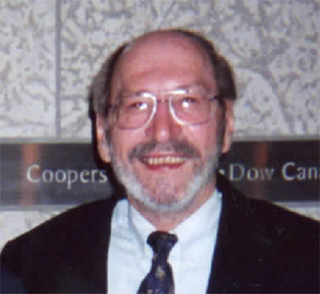
CIM Distinguished Service Medal
1997CIM Fellowship
John Leslie Jambor (1936–2008) left an indelible mark on the mineralogical sciences as well to professional associations such as the Geology Division of CIM, the Mineralogical Association of Canada (MAC), and the Mineralogical Society of America. He was born in Noranda, Quebec but spent his formative years in the Vancouver area. He attended the earth science program at the University of British Columbia (UBC) and benefitted from rewarding summer experiences in the Yukon, Northwest Territories and British Columbia, ultimately staying on for a M.Sc. thesis (1960). Upon graduation, he joined the Geological Survey of Canada in Ottawa in 1962 published his first three articles in The Canadian Mineralogist in which, coauthored with Robert W. Boyle, he defined his first new mineral species, gunningite, a zinc sulfate from the Keno Hill – Galena Hill area, Yukon. He went on to define many more new mineral species throughout his career, 34 in fact. While with the Geological Survey of Canada, Jambor became involved in major projects on the Cobalt–Gowganda silver arsenide deposits in Ontario, porphyry copper deposits in British Columbia, VMS-type deposits in Buchans, Newfoundland, base-metal deposits in New Brunswick, the Strange Lake rare-earth deposit on the Quebec–Labrador border, and rare-earth deposits in the Blatchford Lake complex, Northwest Territories. In 1966, another major investigation, this on the sulfosalt assemblages developed in the contact aureole of the Madoc A-type granite, south of Bancroft, Ontario, constituted his Ph.D. dissertation (Carleton University, Ottawa).
The second phase of Jambor’s career was in 1975 when he moved across the street to the Mines Branch (CANMET), where his expertise was sought to deal with the mineralogy of mine wastes. It is there that he turned his attention to various members of what is now called the alunite supergroup, of which jarosite is a prominent member. Throughout his stay at CANMET and up until his retirement in 1993, he edited summaries of new mineral descriptions approved by the IMA Commission on New Minerals, Nomenclature and Classification (CNMNC). Retirement saw a move back to the Vancouver area, and appointments as Adjunct Professor at UBC, his alma mater, and the University of Waterloo. He continued his work in the area of applied mineralogy as head of Leslie Research and Consulting. During this post-retirement period, he became involved in remedial engineering projects at sites of acid mine drainage, and investigations of the consequences in mobilization of toxic elements in the groundwater supply.
Over many years while at the GSC and at CANMET he was co-editor of The Canadian Mineralogist (1975-1977) and for many years Editor of CIM Special Volumes for the Geology Division. He received many awards and medals including the Hawley Award (1970) and Berry Medal (1992) from MAC, and the Barlow Medal, Julian Boldy Memorial Award and the Distinguished Service Medal (2004) from CIM. In 1973, the new mineral, jamborite, a Ni-Co sulfate oxyhydrate was named in his honor (Morandi & Dalrio, 1973)1. In spite of his many contributions to the minerals industry and academia, Jambor was a very modest individual who worked diligently “in the trenches” and was widely sought for his mineralogical expertise.
By Louis Cabri and Andy McDonald
1 Morandi N. and Dalrio, G. (1973) Jamborite: A new nickel hydroxide mineral from the Northern Apennines, Italy. The American Mineralogist 58, 835-839.
Bindi, L., Christy, A.G., Mills, S.J., Ciriotti, M.E., and Bittarello, E. (2015) New compositional and structural data validate the status of jamborite. The Canadian Mineralogist, 53, 791-802.
 - dev.png)

